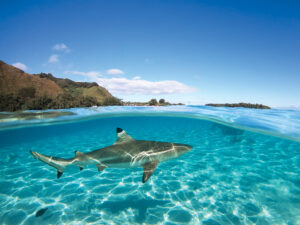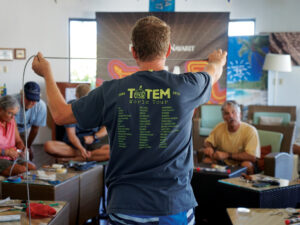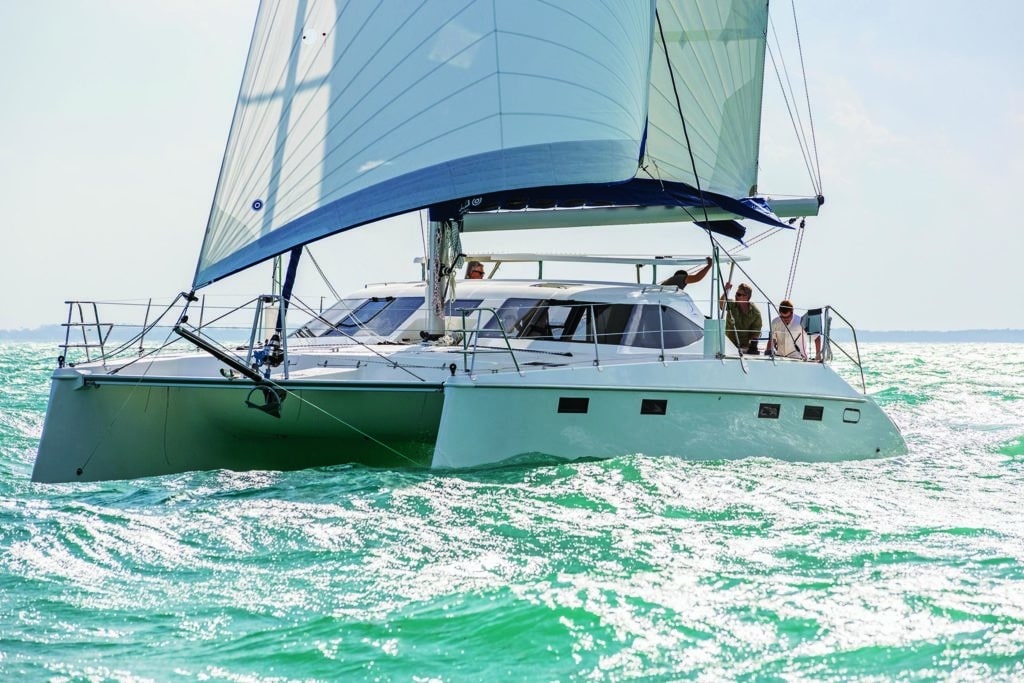
In the growing North American multihull scene, there are players who have deep roots here, though they build their boats outside the U.S., either to keep costs down or to tap into an experienced workforce at an established yard.
Multihull veteran Rob Poirier has one goal for Antares Yachts — to build an offshore-capable cruising catamaran that’s designed for a couple to be able to sail easily and live aboard safely and comfortably. Antares Yachts launched in January 2008, when Poirier and designer Ted Clements bought the Antares catamaran molds from PDQ Yachts after the company decided to focus solely on power cats. Today the company Antares Yachts is based out of South Carolina, with the factory located in Argentina.
“When we started Antares Yachts, we knew we wanted to fulfill a need that we saw in the market,” says Poirier. “There were plenty of cats designed for the charter trade, which pack in as many heads and beds as possible, and there were the high-performance cats, which can be challenging for a short-handed crew to sail, but there were very limited options for a couple who wanted a true bluewater cruising catamaran. We build the Antares to provide tremendous offshore safety because a boat should protect you.”
Bucking a trend for ever-larger boats, Antares currently builds only the 44i. “Anything more than 50 feet isn’t honestly for a couple,” Poirier says. This year, they plan to launch the 44e (the “e” is for expanded), which provides additional seating and storage in the saloon. Poirier, who was a vice president at PDQ Yachts, noticed that nearly all of PDQ’s power-catamaran customers were ex-sailors, and he discovered that the main reason they got out of sailing was to get out of the weather. Consequently, the Antares features a fully protected helm with a solid bimini overhead and a glass windshield with wipers. A removable enclosure provides additional protection to help keep the cockpit comfortable in the worst weather.
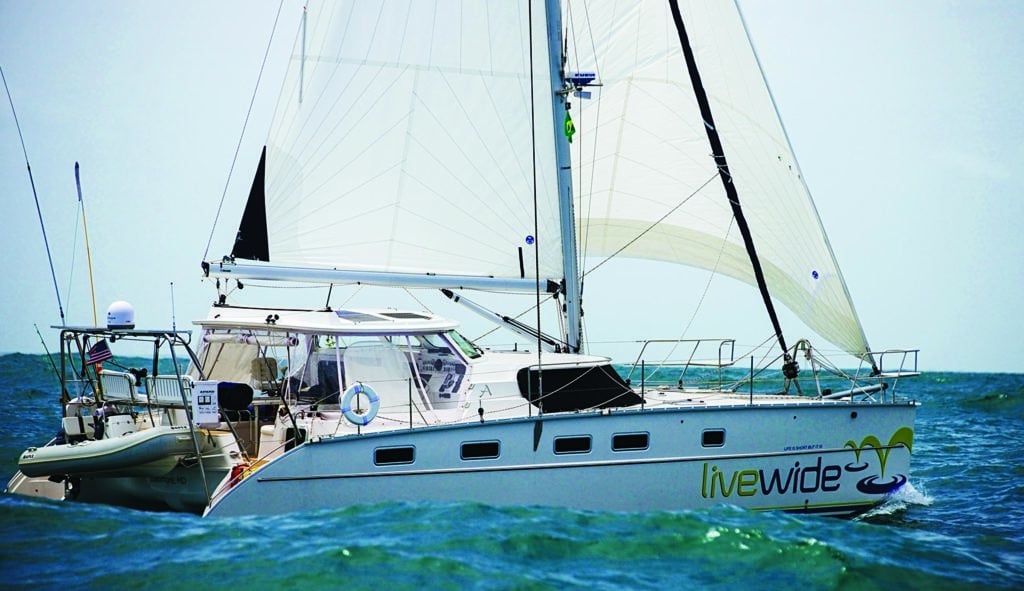
Each Antares cat is hand-built, and the yard launches about five to six boats a year. During the two- to three-year waiting period to get a new boat, new owners can get to know the boat well in advance by attending Antares U. This education program is offered twice per year and gives customers the opportunity to sail the boat and learn the systems. “One-third of our buyers have little cruising experience, about one-third are lifelong sailors, and the rest are somewhere in between,” says Poirier. “The majority plans to do some serious cruising and to live aboard full time. To this end, having the factory in Argentina has provided the wonderful surprise benefit of a great cruising ground to explore as soon as owners take delivery.”
Balance Catamarans as a corporate entity is a relative newcomer to the multihull scene, but its founder, longtime yacht broker Phil Berman, has been a player in the industry for years. Berman opened the Philadelphia-area brokerage The Multihull Company in 1999, and today has offices in multiple locations.
It was through working with clients that he identified what he sees as a hole in the multihull spectrum, which stretches from high-volume, load-carrying cats intended for charter to ultralight (and ultra-expensive) high-performance catamarans that aren’t particularly well suited to couples and cruising families.
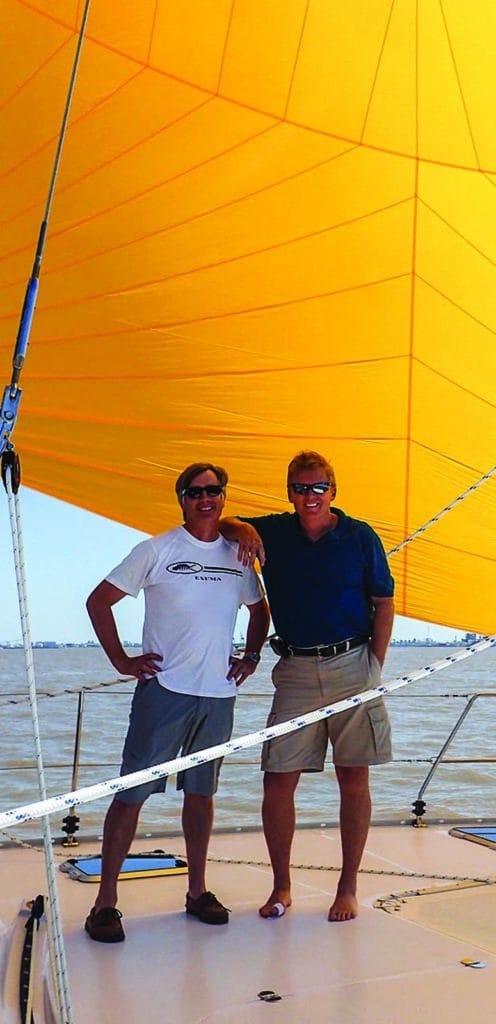
Berman worked with New Zealand designer Roger Hill and South African designer Anton Du Toit to strike a balance — hence the company name — with a range of boats that have hull forms and daggerboards geared toward performance, but enough interior volume to carry all the creature comforts and belongings needed for long-range voyaging and living aboard. Sail-handling systems are constructed for a short-handed crew, but also to enable a good day’s run. To do this and offer quality at a price that, again, falls somewhere between least and most expensive, he has opted to build at well-established yards in China and South Africa.
“One thing that has happened in the catamaran industry is that the charter market is driving most of the design decisions of the big builders because the consumers want the largest-volume boats they can get at the lowest price,” says Berman. “There’s nothing wrong with those boats at all; but it has left a hole in the market, in my opinion, for a couple who don’t want a boat to charter, and prefers to sail faster and actually live on the boat and do some real voyaging.”
The Balance range includes five models, from 42 to 66 feet. The company has built five 451s and two 526s, and previously built four of its 60s under the Nexus Catamaran brand. In designing the boats, Berman has tried to make sensible compromises. Had he used plywood for furniture and bulkheads, and inexpensive polyester resin, he could have built the boats for less, but they’d be heavier and slower under sail. Instead he uses foam coring and vinylester or epoxy resin in the hulls and deck, and carbon fiber where practical for strength and to save weight — but not everywhere, in order to cap the cost.
“We’re strongly focused on value, trying to create a boat for a middle-or upper-middle class person who wants to live on a boat and go cruising,” says Berman. “Our prices range from $525,000 on up to $2.5 million, depending on the size of the model chosen and how she is outfitted. We are a boutique builder of semicustomizable catamarans and intend to build no more than six to 10 catamarans a year.”
— Jen Brett and Mark Pillsbury

